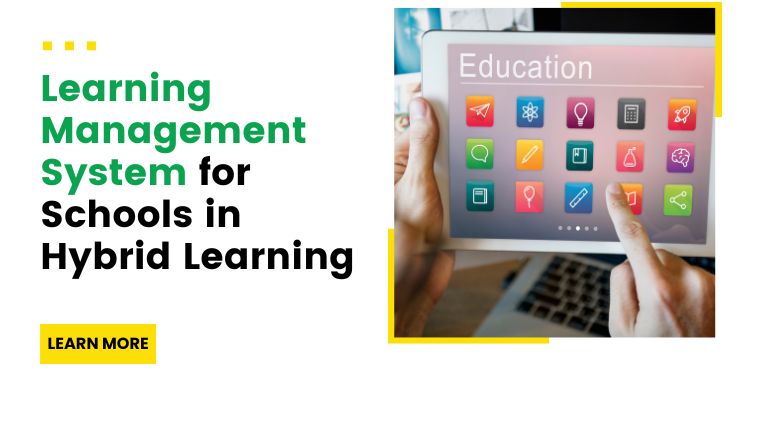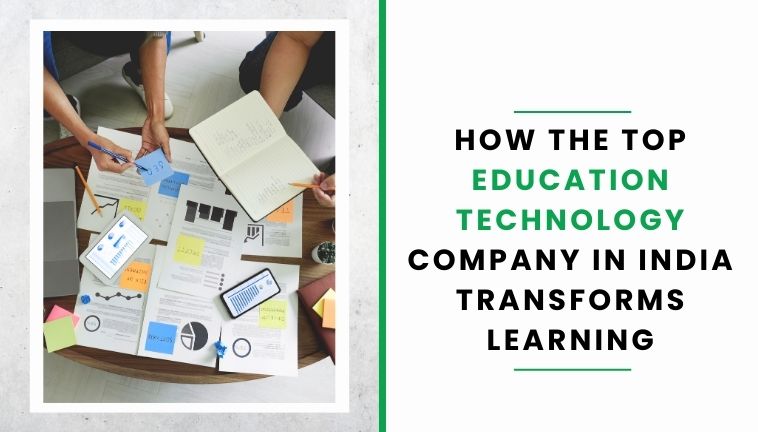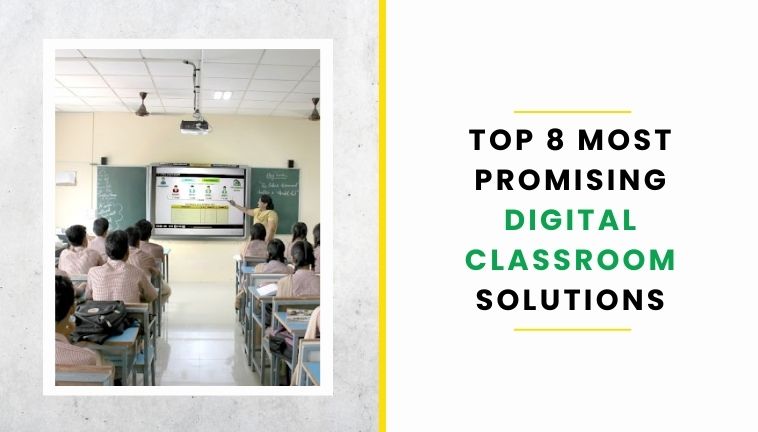Blogs
tag: LMS
Home /
LMS

April 17, 2025
Future-Focused Digital Learning Solutions for Schools
The education system is quickly shifting from traditional classrooms to digital learning solutions. With today’s technology, it’s easier than ever to connect with students through engaging and interactive digital tools that work for all types of learners. Digital education isn’t just a short-term trend; it’s shaping how students and teachers will learn in the future. Schoolnet is leading this change by using smart technology to improve learning for both students and teachers. In this blog, you’ll explore what the future of a looks like and see how Schoolnet is playing a key role in transforming education.
Read More ⟶

April 8, 2025
Learning Management System for Schools in Hybrid Learning
Education has changed dramatically in recent years, with hybrid learning becoming a key part of modern teaching. By blending online and offline methods, hybrid learning offers greater flexibility, better access, and more personalized experiences for both students and teachers. But managing this mix of learning styles can be a challenge. That’s where hybrid school management systems transform how schools run and support this model. This article will examine how these systems help make hybrid learning smooth, efficient, and impactful. What is hybrid learning? Hybrid learning combines traditional in-person classes with online learning tools. Students can join classroom sessions while also using digital resources, virtual lessons, and remote tools. This approach supports different learning styles and schedules, making education more flexible and inclusive.
Read More ⟶

April 3, 2025
How the Top Education Technology Company in India Transforms Learning
Learning is different now. Old classrooms with only books and blackboards are changing. The Top Education Technology Company in India is using innovative technology to help students and teachers. But it’s not just about using computers—it’s about making learning better for everyone. New Ways to Learn: More Than Just Smartboards Technology is making school fun! Now, students don’t just read from books. They watch videos, play learning games, and take online quizzes. Teachers also use smart tools to see how well students are learning. This helps them teach in a better way. How the Top Education Technology Company in India is Helping Students The top is leading this big change. Let’s see how it is making learning better for students and teachers!
Read More ⟶

November 29, 2024
A Guide for the Right LMS for Your Digital Classroom
We live in a fascinating time. Learning now feels as simple as scrolling through social media, and upskilling is more like leveling up in a video game than sitting through a dull lecture. In this world, a solid Learning Management System (LMS) makes learning truly engaging and effective. Think of Learning Software or more specifically, LMSs as the helpful sidekicks of education. They’re not just regular platforms; they’re tech hubs that gather everything you need to learn courses, videos, and even classic textbooks all in one place, accessible from anywhere.
But here’s the twist: with countless LMS options available, the real question isn’t if you need one (you do), but which one is right for you. That’s where we come in with our ultimate guide. In a world overflowing with educational possibilities, choosing the right LMS is like picking the best path in a choose-your-own-adventure story and we’re here to guide you every step of the way. Understanding LMS for your Digital Classroom Imagine a virtual command center for learning that’s what a Learning Management System (LMS) is. Think of it as your digital gateway to education.
Here’s the gist: an LMS is a hub for learning, where you can access everything you need for courses or training. It’s not just a collection of educational materials like videos, quizzes, assignments, and textbooks in one digital space; it’s much more. A good LMS creates a unique and engaging learning experience for its users.
So, how does an LMS work? It’s all about organization and tracking. An LMS arranges your content neatly, guiding you through your learning journey. Many LMSs for digital classrooms also feature an analytics dashboard, allowing educators to track learner progress and performance. The Types of Learning Management Systems for Your Digital Classrooms With so many LMS options available, it’s helpful to know which suits your school and its classrooms best: Proprietary or Open-source Learning Management Systems. Think of this as the “premium” choice in the LMS world. It’s like the Apple of learning platforms you pay for it and get a fully equipped, ready-to-use solution with ongoing customer support, advanced features, and reliable service. However, customization options may be limited. It’s a sleek, straightforward choice but less flexible for DIY changes. This one’s for those who like to tinker or save on costs. Open-source LMS platforms are free to use and highly customizable, allowing you to shape the platform to match your unique content and teaching style. The downside? You’re usually responsible for support, so a bit of tech know-how, or a team to help, might be needed. Think of it as the Android of LMS: adaptable, but you might need some tech skills for the finer details.
A popular open-source option is Open edX, known for its flexibility. It’s the “DIY wizard” of LMS platforms, letting you create a tailored learning experience. So, when picking an LMS, your first decision is between proprietary convenience and open-source flexibility. A 12 school without the right Learning Management System (LMS) is like sailing without a compass you might get somewhere, but it’ll be a rough journey. Here’s why selecting the right LMS is crucial.
First, today’s learning is all about personalization. Kids have different needs and styles, and the right LMS helps tailor learning to each student, like a custom-fit suit. You can adjust lessons, assignments, and assessments to suit each student’s pace and preferences, making it feel like each child has a personal tutor.
Next, let’s talk about engagement. The right LMS makes learning interactive and fun. Think gamified quizzes, engaging videos, and discussion forums. Kids stay interested, which leads to better knowledge retention. It’s like transforming a regular classroom into an exciting adventure.
Finally, tracking progress is seamless. The right LMS provides insights into each student’s performance, helping you see where they excel and where they need more support. It’s like having a superpower to predict and meet each student’s unique needs. Choosing the right Learning Management System (LMS) for your requires looking beyond just features and price. Think about your curriculum goals, the number of students who’ll use the LMS, and your budget. Are your users students and instructors tech-savvy, or do they need a simpler interface? Consider the future, too: can the LMS grow with your school’s needs? Don’t overlook support will you need ongoing help, or can your team manage issues on their own? By considering these factors, you’ll be able to choose an LMS that’s truly suited to your needs. Are your teachers, administrators, and students tech-savvy and open to exploring , or do they prefer simplicity and ease of use? If your team leans towards tech expertise, a feature-rich LMS may be the best fit.
But if user-friendliness is a priority, look for an LMS with a straightforward interface. Adaptability is just as important to make sure the LMS can evolve with your school’s changing needs. By assessing user skills and adaptability, you’ll choose an LMS that not only suits your users' abilities but also supports growth and innovation in your educational community. Scalability is key to long-term success in education. Can your chosen LMS handle a growing number of users without disruptions? Look at how well it adapts to your school’s specific setup. The right LMS will grow and adjust with your institution, ensuring a smooth and effective learning experience for everyone involved. Monitoring learning progress is vital for educational institutions. Your LMS should have strong tracking features that generate detailed reports and data, offering insights into the effectiveness of your programs. This information helps identify what’s working well and where improvements are needed, creating a more efficient and productive learning environment for both students and educators. The way your new LMS works with existing systems is crucial. Integration is key. Your LMS should align smoothly with your current educational tools. Involve your IT team and educational experts to assess hardware and software compatibility. Ensuring easy integration reduces disruptions and makes the transition seamless, helping teachers and students adapt quickly to the new learning environment. Real-world feedback is invaluable. Reach out to educators and administrators who are already using the LMS you’re considering. They can share firsthand insights into the system’s strengths and weaknesses in a school setting. Their experiences provide a clearer picture than marketing materials, revealing how the LMS performs in real educational environments. The journey doesn’t end after purchase; it continues into the post-purchase phase. Ask about the technical support and after-sales service provided. Is support available 24/7 or only during certain hours? Does the company offer a trial period so you can test the software before making a final decision? Also, consider whether the offers user training or just a manual. A smooth post-purchase experience is just as important as choosing the right LMS initially for your educational institution’s future. As we explore the world of education, one thing is clear: choosing the right isn’t just a decision; it’s the foundation for your school’s future. We’ve covered the essential factors of user adaptability, scalability, system integration, and ongoing support all crucial parts of this important choice.
In the search for a comprehensive solution that fits seamlessly into this educational landscape, meet LMS. Designed with schools in mind, Schoolnet combines a user-friendly interface with powerful features. It doesn’t just keep up with your school’s growth; it supports it. Smooth integration with existing systems ensures an easy transition, and its strong tracking and reporting tools empower educators with valuable insights into the learning journey.
Read More ⟶

July 2, 2024
Top 8 Most Promising Digital Classroom Solutions 2024
In today's digital world, technology has revolutionized how teachers teach and students learn. Amazingly, 82% of teachers worldwide believe that using digital tools in the classroom has significantly boosted their students' productivity and engagement. Of course, the digital classroom solutions needs to work as advertised and be affordable.
But there are other important factors to consider. Questions like "Which solution will help me teach my students most effectively?" or "Which platform is the easiest to use?" or even "Which virtual classroom software will make teaching and learning fun?" are crucial.
The good news is that today, the virtual classroom software market offers many choices for online teaching. In this post, we’ll help you narrow down the best options. Why Digital Classrooms Are Needed in Online Learning Environments? In a world where attention is currency and engagement drives success, studies show that adding interactive elements to can boost student participation by nearly 50%.
Teaching is evolving, moving beyond traditional classrooms. Now, teachers can connect with students online, providing real-time feedback. This makes education more interesting and accessible for everyone while leveraging the benefits of technology in the classroom.
This shift helps educators capture students' attention and make learning more enjoyable than ever before. So, you might wonder, what is the best virtual classroom software? The answer depends on your specific needs.
As hybrid and virtual learning become more common, teaching demands have grown, requiring diverse solutions at every step. Using multiple tools for classes, assignments, assessments, and one-on-one discussions can be challenging.
Before you begin searching for the right software, you need to know what features to look for. Some essential features include: The classroom software should work with all operating systems and devices. Some of your students might be using older phones or laptops, so the software shouldn't force them to buy a new device. Using a is pointless if it doesn't create an immersive experience. It's tough to keep students' attention in a video class, and poor video quality makes it even harder. Clear and high-quality video streaming is crucial for making the best digital classroom software effective. The study materials you provide should be easy to download, or the software should support offline reading. This way, occasional network problems won’t become a barrier to learning. If the software and the interface aren’t self-explanatory and take days to understand, it’s not worth it. You're already busy creating study materials, assignments, and assessments, and preparing lessons. You shouldn't have to spend extra time figuring out how the software works. The range of digital tools available for virtual classrooms is vast. In this blog, we've gathered some of the most popular tools used by K–12 schools across India. These tools are designed to make online learning enjoyable and effective, enhancing collaboration between students and teachers. is an all-in-one teacher device that transforms any flat surface/wall into an interactive surface. Super-easy to set up and an absolute delight to use, its versatility, multi-functionality, and sheer simplicity have made it an indispensable tool for teachers. VEDAMO is a global digital classroom app offering interactive digital classrooms and learning management systems. According to , the platform is made by tutors for tutors. It aims to give virtual learning a traditional feel, with all the features needed for a successful class setup. WizIQ is a cloud-based digital classroom software that offers a range of features to simplify lesson delivery. It allows for a smooth transition from physical classrooms to online ones. also provides solutions for businesses, including corporate training and online onboarding. ClassIn is a comprehensive e-learning solution for teachers, students, and school management. Launched in 2016, ClassIn was the first to offer a truly education-focused virtual platform. This innovative digital classroom app is designed specifically for students.
ClassIn's interactive tools make online classrooms lively and engaging. One major challenge in virtual setups is making online sessions as engaging as physical classrooms. ClassIn addresses this with its all-in-one solution, providing a complete digital classroom experience. Moodle is an open-source learning platform that lets you create a personalized learning environment for your students. This user-friendly platform offers almost all the essential elements of a digital classroom. Designed to support educators, administrators, and learners, Moodle provides everything needed to thrive in the virtual education system. Google has been a trusted source for years, making a convenient learning solution for many teachers and students. If you ask a fellow teacher about the best virtual classroom software, they might recommend Google Classroom. Electa Live is another excellent all-in-one digital classroom app offering virtual classroom software and an LMS for online teaching and training. This cloud-based platform allows users to conduct online tutorials, lectures, live meetings, group sessions, and individual tutoring.
Its LMS empowers trainers and school management to administer, document, track, and evaluate staff performance. It also simplifies assessment, progress tracking, and record-keeping for instructors. EduKool is a popular app in India, widely used by instructors. This ERP system is designed to help you manage your institutions through its mobile app. You can register a single school or multiple schools under one profile.
EduKool is not just virtual classroom software; it also functions as an ERP. It helps manage staff and student attendance, admission and fee administration, assignment and assessment allocation, online grading, and much more. Their solutions range from ERP and to virtual classrooms and online education. From anywhere in the world, you are just one click away from connecting with your students and their peers. platforms offer the chance to keep everyone focused and engaged with high-quality, real-time audio and video. These platforms also come with a suite of collaborative tools that help turn distracted viewers into active learners.
Read More ⟶

June 21, 2024
Why Learning Management Systems are Important in Education?
In recent months, online learning has become essential due to the pandemic. At first, schools and colleges found it hard to switch from physical classrooms to digital ones. However, one tool has made this shift much smoother: the learning management system (LMS).
An LMS makes distance learning easier and enhances the overall classroom experience. Curious about its benefits or what an LMS can do in education? Our comprehensive guide has all the answers you need. Understanding Learning Management System in Education Many people who have heard of the software want to know what a learning management system (LMS) is. An LMS is software designed to make learning more efficient and enjoyable. It's a complete teaching solution where instructors can easily upload course content. And learners can access it through their profiles.
The system supports both in-person and virtual classes. It also makes communication easier, tracks progress and keeps records of important student data. While it helps instructors work more efficiently. It also meets the needs of learners. Overall, it's a tool that benefits everyone involved in the teacher training process. Once you understand what an LMS is in education, you'll probably want to know its benefits. An LMS is invaluable for teachers and school owners looking to digitize their curriculum. Here are some exciting advantages of using an LMS for e-learning. An LMS allows instructors to create course content in multiple formats. Combining the core curriculum with visual and audio content makes courses much more engaging for students. With an LMS, you can also gather materials from various sources to create dynamic e-courses.
Classroom lectures can get monotonous, but students exposed to diverse learning materials engage more and perform better. An LMS ensures that every student has equal and up-to-date access to . Students can explore materials that interest them most and learn in ways that suit their preferences. A gives students access to e-learning content anytime and anywhere. There is no need to create separate materials for virtual teaching. Whether students choose classroom or distance learning, they access the same content.
The flexibility of an LMS lets students learn at their own pace. They can rewatch video lectures or explore new content, tailoring their learning plans. As long as they have login credentials and a good internet connection. Students can dive into their studies from virtually anywhere. Harnessing an LMS allows you to monitor student performance. But also craft a robust assessment system. Beyond traditional tests and quizzes, the system tracks how students progress through course materials. Also, provides a clear view of their academic journey.
What makes the LMS assessment system unique is its interactive nature. Students can actively participate by rating courses and offering feedback on e-learning content. You can swiftly adjust the course content if a majority suggests a different approach for a particular chapter. Updating and enhancing content is seamless. Enabling you to enrich learning experiences with supplementary materials and external references when necessary. In educational institutions, integrating a learning management system (LMS) isn't just about efficiency. It's about transforming how teaching and learning unfold. Managing an e-learning curriculum involves navigating through various stages and harnessing a suite of features for seamless operation. A robust LMS combines tools like calendars, student forums, and communication channels to create a cohesive e-learning ecosystem.
Moreover, LMS platforms empower educators to share and promote courses across social media platforms effortlessly. Leveraging the centralized repository of lectures, notes, and .
For school administrators overseeing multiple course creators, an LMS offers scalable solutions. It streamlines tasks such as managing teacher profiles. And customizing content structures to meet diverse grade-level needs.
From enterprise LMS to individual and on-premise solutions, different types of LMS cater to specific requirements. Each aims to elevate educational experiences through enhanced learning systems. In an LMS, students can upload assignments and check deadlines effortlessly. Ensuring they stay on track with their coursework. Submitting assignments directly through their LMS profiles adds to the convenience.
This integrated system empowers teachers by automating submission tracking. Also, providing timely support to students who may need it. Gone are the days of manually sifting through records to find missing assignments thanks to the LMS. All submissions are logged, holding students accountable for meeting deadlines.
Moreover, the LMS acts as a comprehensive record of student achievements and grades. Instead of managing stacks of paperwork. Teachers can access and manage all course data seamlessly from a centralized database. Schools manage a large student body and often spend considerable amounts on printing coursework. Which strains budgets and has a negative environmental impact. Enter the LMS a game-changer offering cost-effective and eco-friendly solutions tailored to meet the needs of diverse student populations.
What's more, content uploaded onto the stays permanently accessible. These resources can be repurposed for future batches, and easily updated as needed. Coupled with other strategic benefits of a learning management system. These cost and resource efficiencies position LMS technology as a pivotal advancement in the education sector. While offer numerous benefits, they are not a cure-all solution. They work best when integrated with traditional classroom instruction to create a blended learning environment. This approach harnesses the strengths of both methods, offering students a comprehensive and interactive educational experience.
Whether you're looking to overhaul your entire school system or create a dynamic online course. Embracing a learning management system is the smart choice for enhancing educational experiences.
Read More ⟶

May 31, 2024
The Six Best Learning Management System for Teachers and Students
"Online" and "education" are two words often linked together, transforming countless lives. Schools are no exception. Many have embraced the power of online learning and digital classrooms , winning over both students and their parents with ease. Choosing the right learning management system (LMS) for schools can be tricky. To help you make a well-informed choice, we've put together a guide on what to look for and a list of the 6 best LMS options. Complete with their pros and cons. Let's dive in!
Read More ⟶
© Schoolnet India Limited





